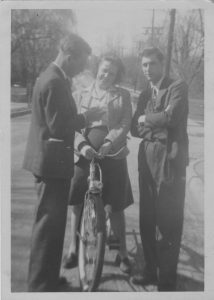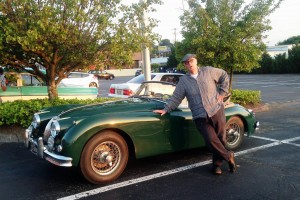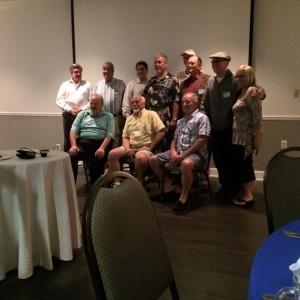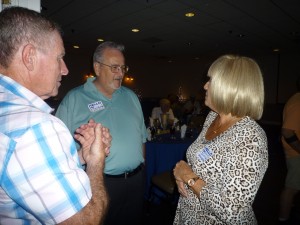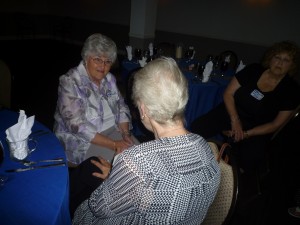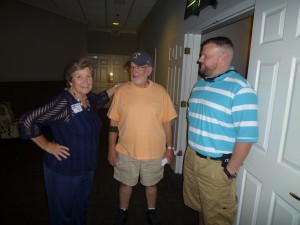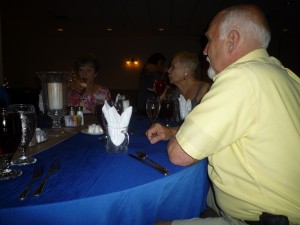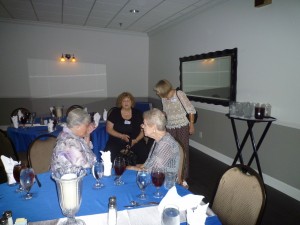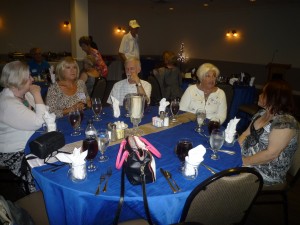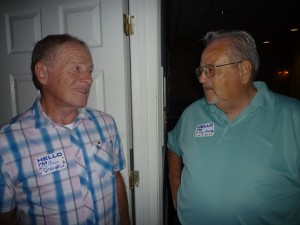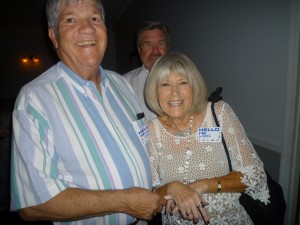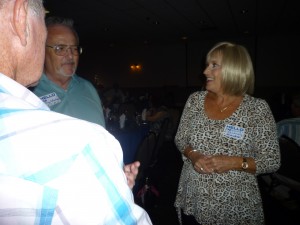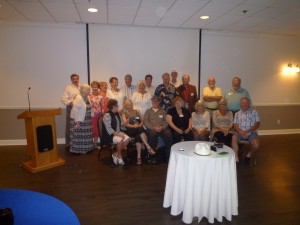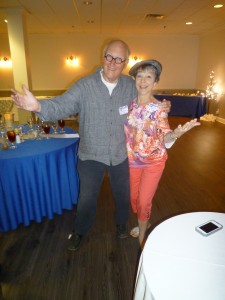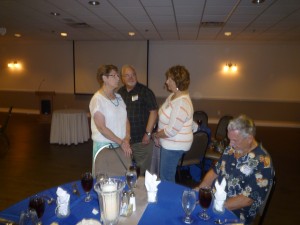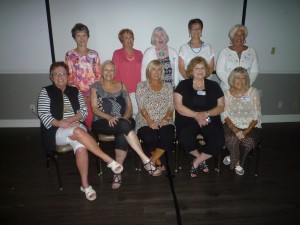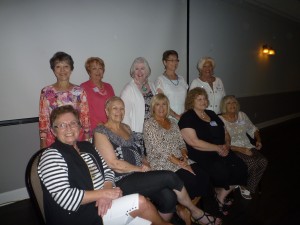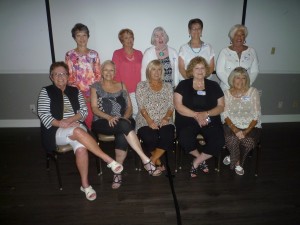In August of 1977, I took vacation from my job at The Louisville Times and set out for the Soviet Union, signing up for a 22-day tour. I had crisscrossed the U.S. and traveled around Europe three times, so I considered myself a veteran traveler. But I knew this journey would be different.
And so it proved, from introducing Central Asians to Polaroid instant photography to encounters with the KGB; from dodging gourds thrown by an angry Muslim in Uzbekistan to waving at a binoculared and curious teen girl at the Kirov; from witnessing a chair-throwing brawl at a tennis match in Tbilisi, Georgia to sheltering from an early-September snowfall on the shore of Siberia’s vast Lake Baikal.
Most of my previous travel forays had been solo or with a friend or two, but for this journey I would have to sign up with a tour group, required of American tourists by the Soviet government. At Dulles International Airport, I met my nine fellow travelers, all veterans of international journeys.
Two were retirees from the State Department and a third had lived in India, working for a U.S. health agency. Helen’s State Department background included working with train loads of refugees in north Africa. She was traveling with Marie, a psychologist friend who had brought her Polaroid camera. When she took an instant portrait of the hotel manager in Samarkand, he saw to it that our next meal included fresh grapes, which unfortunately led to several of us coming down with the Czar’s Revenge. Dick’s experience with the health agency meant that he was an expert on intestinal maladies, knowledge that was of great use.
Our U.S. escort was Lillian, a first-generation American whose parents emigrated from the Soviet Union immediately after World War II. Russian was her first language. She had first visited the USSR as a college student on a summer study and travel program in Leningrad. Her familiarity with the Soviet system and Russian-language skill would prove essential. The trip would not have been nearly as enlightening, or as much fun, without her presence.
The flight provided a proper introduction. The food was memorable because of its inedibility. I can still picture a rubbery piece of baked chicken of a notable grayish appearance. I opted to wait until our French refueling stop to eat — even fast food at Orly would be better than what was served up by the indifferent Aeroflot stewardesses.
The plane, a Soviet-built Tupolev, was at capacity, primarily with apparatchiks of the Soviet diplomatic corps and/or their families returning to Moscow. Just across the aisle from me and Lillian were three middle-aged Soviet women, each gripping shopping bags stuffed to the bursting point.
When the seat-belt light went off, the bags were opened and the trio began comparing the contents — wigs. The women spent the first hour of the flight trying on, swapping, and giggling. Lillian explained that wigs like these were unavailable in the Soviet Union. “They probably took orders from friends before they departed on their U.S. visit,” she said.
Then, in Russian, she complimented the women on their choices, getting beaming smiles from the be-wigged trio.
As our flight neared Moscow, Lillian told us what to expect with Soviet customs. Printed material would be carefully examined. No Playboy magazines, no books that depicted the USSR in a light that wasn’t favorable as defined by the Kremlin apparatchiks. Such publications were in high demand, Lillian warned us. I was carrying Desmond Smith’s guide to Moscow, and it caused a short delay when the customs officer confused it with Hedrick Smith’s book on life in the Soviet Union, which was banned. A supervisor was summoned and after a few minutes of looking and conferring, my guidebook was handed back and we were ushered through.
Just outside the customs area our Intourist escort, Anya, introduced herself. She would prove efficient, a staunch Communist — and a hidebound apparatchik. By the next day, Helen, Marie, Lillian and I were working on ways to circumnavigate Anya.
The bus ride into Moscow introduced us to Soviet architecture and suburban planning — complexes of multi-story, gray-concrete buildings surrounded by unkempt fields crossed by worn paths leading to bus stops.
But once we entered the city, the architecture of czarist Russia proved more interesting, with pastel-colored buildings providing visual relief from the massive Soviet edifices. And as we neared Red Square, St. Basil’s onion-shaped domes vibrantly countered the Kremlin’s forbidding limestone walls.
Our hotel, the Intourist, was just off the square. It was, according to Desmond Smith, exclusively for foreign guests. The government did not want foreigners mingling with ordinary Soviet citizens. In the airports, we would discover, domestic lounges were separated from those used by foreigners.
After check-in we had the first of many meals featuring tough meat of mysterious origin. The meals invariably included well-prepared French fries, which became my primary sustenance. Then came an inner-city tour, Anya pointing out the official monuments and buildings, Lillian pointing out those that Intourist didn’t want us to know about, such as the pale-yellow building that housed the KGB.
We wandered Red Square, toured St. Basil’s and stood in line for an hour or so to get a glimpse of Lenin in his tomb. Soldiers patrolled the line, making sure there were no cameras or other banned materials. Lenin looked remarkably good for someone dead for 50 years, good enough so that many Western experts believe that he is made from wax.
Each time we re-entered the hotel, we had to dodge a couple of teens wanting to purchase any blue jeans we might have or offering advantageous ruble/dollar exchange rates. A word or two from Anya and they would drift away. Off the hotel lobby there was a “dollar store” where foreigners could purchase Soviet souvenirs, but payment could only be made in U.S. dollars. There was also a bar, popular with late-night drinkers, that likewise only accepted dollars.
From those seeking jeans or dollars, there would be a hurried “nichevo” uttered as they scattered at Anya’s admonition. Lillian explained that the word was the Russian equivalent of an accommodating shrug and the phrase “never mind.” Muscovites, we learned, use the term several times daily – trying to complete a phone call, summoning an elevator, waiting for service from an indifferent waiter.
At our second meal in Moscow, facing another unidentifiable piece of meat, Helen looked at Marie, shrugged and muttered “nichevo”, much to our amusement and Anya’s embarrassment.
After our introduction to Moscow’s official Soviet-dom, we boarded another Aeroflot Tupolev and headed south to Tbilisi, to the area that produced Josef Stalin. And where, according to journalist Hedrick Smith’s knowledgeable account of his Soviet experiences, the Kremlin’s hold had been severely compromised. Georgia, Smith reported, was home to entire off-the-books industries dedicated to producing black-market products destined for Moscow and Leningrad.
We were booked into the Tbilisi Hotel, an establishment on the far side of its glory days. High ceilings, marble staircases, room-size oil paintings – and an all-male dining-room band that could have graced the stage of a 1940s Hollywood movie. Each musician was outfitted in dark dress pants and starched white shirts. When they learned that we were Americans, they broke into “Yankee Doodle” then followed up with “Melancholy Baby” featuring phonetic-English vocals.
Lillian’s experience in Georgia was limited, but she compared it to “more like a sunny Mediterranean country” than the dreary and gray Moscow we had just witnessed. After our check-in, and on a walk around downtown, Lillian and I noticed a flyer for a tennis event scheduled a couple of hours later. Featured were Billie Jean King and four other Americans, including John Lloyd, then married to Chrissie Everett. We decided we had to attend.
Back at the hotel, we approached Anya about getting a couple of tickets. “Impossible,” Anya said, noting that we were scheduled to attend the circus at the same time. We then figured out where the tennis was taking place and how we could get there by bus. After arrival, we had no trouble purchasing tickets, even though the venue, a small indoor facility, only held about a thousand fans.
There, after the distraction of the metal-chair brawl on the landing behind us (quickly broken up by Soviet security), we were introduced to the character who would prove to be one of the journey’s most interesting.
“In Moscow, just ask for Andrei the Great – everyone knows me there,” he told us.
Lillian and I, seated about 20 rows up, had decided to try to make our presence known to the participating Americans. We yelled “Hey, John” at an appropriately quiet break in the action, assuming that was the last thing Lloyd would be expecting in Soviet Georgia.
We were correct – he immediately turned in our direction and, spotting a cute blonde (that would be Lillian), he motioned us down. We were soon sitting with Lloyd (King was involved in her match), the American official in charge of the tour, and the Soviet translater/liaison/handler, Andrei the Great.
The American official – I don’t remember his name – was obviously taken with Lillian, but she was familiar with such attention and knew how to handle it.
During a break in the action, Andrei and Mr. Official invited us back to the locker room for soft drinks. There, we got to know Andrei better.
He looked and sounded like Marty Allen, a Jewish comedian popular at the time: small of stature with an impressive Afro haircut and a distinctive Brooklyn accent. When I suggested that he must have spent time in New York to master English, he said that he had never been outside the Soviet Union and could not leave: “I’m still in trouble over my two divorces and three marriages,” he explained with a grin.
Besides, he contended, he did not want to leave. “I love my country. If I don’t like my job, I don’t pay much attention to my duties, and they give me another job.” Each comment was accompanied by a laugh.
Later, as our adventures continued into Central Asia and more contact with the Soviet bureaucracy, we guessed that Andrei was KGB. The argument: The government would want the U.S. contingent closely watched while they were in the USSR so the apparatchiks would provide someone who spoke perfect English and therefore would be able to understand the meaning behind any probing questions. And any Russian with that kind of English expertise would have received the best training and education, the kind of training provided by the KGB.
After Soviet Georgia, we flew east for Uzbekistan, with stops scheduled in Tashkent, Samarkand and Bokhara. Tashkent, the Soviet Union’s fourth largest city at the time, had been the site of a devastating earthquake in 1966 and had been re-built with massive box-like Soviet edifices, official-looking and intimidating. If Tbilisi was more Mediterranean in culture and ambience, Tashkent, with its new buildings proudly utilitarian in their severity, was more a statement of the future as defined by official communism.
Our itinerary included show-off visits to a large center-city park, the country’s largest statue of Lenin, and, in the evening, a ballet.
We had been told that Tashkent was rumored to be the site of a notorious “thieves’ market” where black-market goods were available. One item that supposedly could be found there was lapis lazuli, the semi-precious, intensely blue stone that has been mined in central Asia for centuries.
The next day, after Anya explained that “thieves’ markets” were illegal in the Soviet Union and therefore did not exist, we were taken to a sprawling outdoor market.
Helen and Marie were looking for lapis lazuli, the rest of us just looking and taking a photo or two. At one point, as I haggled with a skull-capped man over a couple of small gourds that had been fashioned into snuff holders, the seller noticed that one member of our party was taking a picture. He immediately launched a gourd in the direction of the camera. We got the message.
After marveling at piles of melons and tastings of a sticky, grape-juice candy, we went back to the hotel for another meal only made palatable by the stiff shot of ice-cold vodka that served as the aperitif.
And then we were off to a lecture by local officials and a visiting dignitary. The subjects were economics and history. As we were discovering, the authoritative figures we encountered outside of Moscow were, invariably, posted from Moscow. The main speaker was such a figure. And, as a hedge against any slip-ups, his interpreter/translator was a Muscovite as well.
We were not the only English speakers in attendance, but the others were obviously on official business, with economics apparently the interest. At one point, after an inquiry delivered in Russian, the translator, with a surprised glance at the speaker that quickly turned into a pained stare, took the economist to task, while murmurs broke out among the Russian-speakers in the audience.
“Uh, oh – our speaker just made a mistake,” Lillian whispered.
Finally, the translator responded with a muddled jumble of economic catch phrases that brought the lecture to an end. The question, Lillian explained as we prepared to leave, had been an inquiry about the paramount goal of the Soviet system. The answer, delivered forcefully by the economist: “We want to bury the United States.” The translator told him he could not say that – and decided that was an excellent spot to end the talk.
The next day, after our check-in at the Samarkand Hotel in the centuries-old central Asian city, we got an irritating, nichevo-generating welcome. The elevator was not functioning and our rooms were on the seventh floor. Help with the bags for some of the older group was provided but I chose to lug my stuff up the stairs. Slowed by my labors, I noticed that each step seemed to be a different height from the one before.
Setting my bags down, I took a closer look. Though I didn’t try to measure them, it was obvious that there was plenty of variety. Did the height depend on which workman had that job on that day? Had the hotel been constructed by a crew involving Ivan Denisovitch Shukov’s cadre? Or was it simply another example of the nichevo shrug?
Finally settled in my room, I watched as a windstorm hit the city, rust-colored dust blotting out the streets below. Through the centuries Samarkand has been the site of tyrannical raids by Mongol hordes and other ruthless invaders, and I was tempted to see the storm as an ominous sign.
The next morning at breakfast, Marie brought out her Polaroid camera. Pleased that he had American guests, the hotel manager was hovering around our table, ensuring that everything was suitable. After Marie asked him to smile for a picture, he watched in amazement as the photo emerged from the camera and his image – in color – slowly appeared.
Marie presented him with the picture and he soon was surrounded by his employees, marveling at this instant portrait.
Afterwards, he asked if we had any special meal requests. Our immediate answer was fresh vegetables or fruit.
At our evening meal, each of us found a large bunch of grapes at our seat. And the manager introduced us to his wife. He had told her about his portrait and she had not believed him when he said he got it a minute or two after it was taken. So to convince her, he brought her to work. Naturally, Marie then took a picture of the two of them together. As hotel employees and restaurant guests passed the photo around we enjoyed our fresh grapes.
Unfortunately for several of us, me included, the grapes led to the Czars’ Revenge. Dick, who was not affected, explained that the onslaught did not mean that we had food poisoning: “When your stomach is introduced to bacteria it hasn’t encountered previously, it reacts by quickly sending it on. I guess that my stomach became familiar with that particular bacteria while I was living in India.”
He then generously shared from his cache of Pepto Bismol.
The next day we encountered Timur the Lame – aka Tamerlane – who is generally ranked in the top tier of history’s ruthless conquerors, up there with Genghis Khan and Attila the Hun. Historians estimate that Timur was responsible for 17,000,000 deaths.
His demise in 1405 (while on the way to do battle with a Sino counterpart) was well-marked and his followers made sure he got a proper burial in his base of operations, Samarkand. In the early 1950s, the tomb, suitably grand for a despot of his fame, had drawn the attention of the Soviets and been spruced up to add credence to their claims of respect for the area’s history.
So, after we had wondered at the splendors of the Bibi-Khanym mosque, one of Timur’s signature projects, we were taken to his final resting place. Helen noted that she had never expected to be standing near the remains of a murderous despot, and then we got to talking about how we had come to Central Asia, in a part of the Soviet Union that was generally off-limits to Americans until officialdom’s recent “thaw.” I confessed that a movie had been my inspiration.
The film was “The Man Who Would Be King,” based on a Rudyard Kipling story, directed by John Huston and starring Sean Connery and Michael Caine. The setting was Baluchistan, a sprawling mountainous site stretching over modern-day Afghanistan and Pakistan.
A trip to a travel agent led to the discovery that my best bet for seeing Central Asia was a 22-day tour of the Soviet Union. As bonus, I would spend time in Moscow, Leningrad and Siberia. At the time, I had only a vague notion of Tamerlane, an almost-mythic figure. Now, I was standing only a few feet away from his remains, resting under dirt and stone in a highly polished mausoleum.
But, as our discussion continued, it was pointed out that given the reign of Josef Stalin, it was perhaps a despotic kinship that led to the restoration. Stalin’s brutality, Helen noted, was responsible for an estimated 20,000,000 deaths.
Next stop after Samarkand was Bukhara, close enough so that Aeroflot opted for a propeller-driven airplane, their version of the work-horse DC-3 once common in the US. As with our other Aeroflot trips, the plane was at capacity.
The city, much smaller than Tashkent and Samarkand, seemed more rural in nature. Heaping piles of raw cotton were visible over the tops of walls as we were driven to official tourist sites. Cotton, Anya pointed out, is a primary product of the area, and would be transformed into the brightly colored textiles the area is known for. The textiles were also popular with tourists from Eastern Europe and Russia seeking respite from their gray existence to the north and west.
Centuries-old medresseh and mosques turned into museums awaited tilework restoration. As we had begun to notice, the museums featured at least one elderly female stationed in each room, usually occupying a chair just inside the door. They were there, we now realized, to keep an eye on us. And they all seemed to be entranced by the clothing worn by the women in our group – its Western style and bright colors in sharp contrast to the drab frumpiness of their attire.
In a small museum, the woman seated next to a highly polished samovar that occupied a place of pride took her eyes off Lillian’s dress long enough to make sure that I understood I was not to take her picture. Once Lillian explained that I was interested only in the samovar, she grudgingly moved aside so I could get my picture.
As a reminder of its history of brutal rulers, Bukhara’s skyline was dominated by the Kelyan Minaret, built in the 12th century. In addition to its roles as an observation post and pulpit for calls to prayer, it had earned the nickname as the Tower of Death: Criminals and others out of favor with area rulers were thrown to their death from its top.
Other lingering images involve massive fortress walls still intact after a thousand years, and mosaics featuring Chinese dragons as well as Persian peacocks, visual testament to the city’s importance as a stop on the ancient Silk Road.
And, there’s the image accompanying this account, a photo representative of what we were witnessing in 1977: an Uzbek leading his cow down an otherwise empty street, taken from the balcony of my room in a modern, multi-level hotel, this one featuring a working elevator.
Next up was a half-day’s bus trip across the border into Tajikistan, the republic that provided the USSR a buffer from Afghanistan to the south and China to the east.
Intourist wanted us to see an archeological dig near the hamlet of Pendzhikent. Soviet scientists had dug around a centuries-old Zoriastrian site, but from all we could tell, the dig had not been active for decades. Weed-infestation made the “attraction” anticlimactic, so we were driven back to Pendzhikent to visit a small museum.
Featured were a few ancient baubles, but what stood out to me was a display of graphic anti-Islamic propaganda: bloody images of torture and beheadings parroting the official Moscow take on the religion. Anya attempted an excusatory explanation, but since most of us were still having problems with the Czar’s Revenge we were more interested in the museum’s restrooms. And, for a change, at least a couple of the toilets were outfitted with seats.
The ride back to civilization included a stop at a roadside farm commune where female workers were harvesting potatoes and tobacco was drying on racks. Someone in our group noted that both products were new-world discoveries, which was news to Anya. But our visit was not a planned educational one – it was another bathroom stop.
By air, Eastern Uzbekistan to Irkutsk involves a flight of more than 3,000 miles – we would land in Tashkent and transfer from a small prop-jet to a larger craft. Simple enough in the U.S., but as we eventually learned, complicated in the Soviet Union. After deplaning at Tashkent’s modern airport, we were ushered into the vast lounge set aside for foreign travelers, which we had to ourselves. Through a glass window we could see the much busier departure area for Soviet travelers, just below us.
As we waited to board the plane for our next leg – between trips to the bathroom – we played cards, we read, we talked with each other, we wondered what was taking so long. I decided to take advantage of the empty space to get some exercise by walking from end to end.
After much discussion, one of the women in the group decided that she needed to visit the airport’s clinic for help with her stomach problem. Her report back to us: “They decided I needed to eat more, which is the last thing I need to do. All I got was the typical nichevo response.”
We played cards some more, we refined our grousing, Helen and Marie joined me in walking, introducing military-style cadence until the others let us know that we were no longer amusing. Anya, becoming more and more frustrated, would make periodic trips downstairs seeking information. Finally, it was mentioned that all our flights had been at capacity. And, someone said, “that’s it – they’re waiting until every seat has been filled.”
If that was correct – and it probably was – potential travelers were having too much fun in Tashkent to continue their journeys, postponing departure until the next day. We were taken back to the Tashkent Hotel – without our luggage – as the flight was rescheduled for the next day. Fortunately, since the hotel was new the toilets still had their seats.
The view from our jet was of miles of desert wasteland until we neared Kazekstan’s then-capital, Alma Ata, a re-fueling stop. We were now in the ancient homeland of the Sythes, one of the brutal nomad groups that in centuries past had dominated central Asia and periodically threatened southern Europe.
We had a couple of hours, so I decided to get outside the airport to try and appease my own nomadic yen by wandering around a bit. I managed to slip by Anya, but the airport was far removed from the rest of the city, so I didn’t go far, settling for an unobstructed view of the Tien Shen Mountains. The range defines the border with China.
Eventually, the Czar’s Revenge forced me back into the airport. But at least I could tell my friends that I had seen China, only admitting when pressed that it was from a couple of hundred miles away.
Late afternoon, we arrived in Irkutsk, unofficial capital of Siberia. A frontier atmosphere was dominant – wooden frame houses with firewood stacked outside, oxen-pulled work wagons on city streets, beat-up vehicles re-purposed as residences perched on high spots along the roiling Angara River and its tributaries. And the area’s bloody Soviet history underlined that impression.
Many of the Russians involved in the Decembrist Revolution of the early 1800s were exiled to the city, a procedure that was repeated following the October revolution of 1917. During the latter, the area was the site of fierce battles between the Reds and the Whites.
We were domiciled at the Angara Hotel, an older downtown facility. Its location, I realized, would help in the daybreak excursions I was determined to make – I could easily walk to the shores of the Angara River a bit farther east.
At dinner, the hotel chef presented us with a welcome surprise – a golden aspic featuring a variety of mushrooms. Unfortunately, most of us could only nibble at it thanks to the wrathful grapes of Samarkand.
After dinner there was another circus, this one highlighted by bears playing ice hockey. The crowd was more enthusiastic than the bears, but at least the action wasn’t marred by chair-throwing fans like Lillian and I had witnessed at the tennis matches in Tbilisi.
Daybreak the next morning I was at a bridge over a small tributary of the Angara shooting pictures when I noticed that the man who had been several yards behind me all the way from the hotel was loitering across the road, trying to look interested in the roiling water of the river.
The clip-clop of horses diverted my attention and I turned to be greeted by a friendly pair of Buryats on a wagon.
Then, as I realized breakfast time was near and I didn’t want to face Anya’s ire, I headed back to the hotel, my “escort” lagging a block or so behind. Within a few hundred yards I heard a familiar sound – a female was leading an exercise group in a small park. A peek through the shrubbery revealed a dozen or so women working out to the recorded voice from a Soviet boom box. And the voice’s familiarity made sense now that I could hear her clearly. It was a Jane Fonda tape.
After breakfast (and the disappearance of my “escort”) we undertook an hour-long drive to a small settlement on the shore of Lake Baikal, the deepest and oldest in the world. There we toured a museum devoted to the lake’s water residents, many of which are found only in Baikal. Lunch – involving fish, of course – was in a modern facility overlooking the water.
Afterward, I attracted the attention of a goat, who followed me around as we checked out the wooden houses and their hand-carved frames and eaves. With snow swirling, the decision was made to return to Irkutsk. As I climbed back on board our bus, the nanny followed, finally being removed by the driver, her bleats sounding eerily like “nichevo.” The consensus of my fellow travelers was that she was attracted to my ragged beard.
We departed Irkutsk the next morning for Leningrad, our journey involving five time-zone changes, two refueling stops and a switch to a different jet in Moscow.
Our landing for fuel in Novosibersk provided a scare. The jet – at passenger capacity, of course – taxied to the end of the runway, and turned to proceed to the terminal. Then the engines abruptly shut down. We sat and waited, and waited, and waited. There were nervous murmurs. Then someone noticed a fire truck headed in our direction with lights flashing. The murmurs became louder. Finally, Lillian got an explanation from a stewardess: The fire truck was needed to restart the jet engines. Soon, we were in the air again.
By the time of our visit to Leningrad, thanks to the persistence of the Czar’s Revenge and the always-present Soviet atmosphere of repression and its resultant fear, I was looking forward to returning to the USA. But Leningrad provided a final ray of sun despite overcast skies.
Interestingly, after the collapse of the Soviet Union in the early 1990s, Russia was quick to return the city’s pre-USSR name. St. Petersburg is much more suited considering the city’s Italian baroque architecture, its arts orientation, and its working, up-to-date facilities, many of which were built in Finland with a resultant Scandinavian-modern vibe.
Our schedule included the Hermitage, with its rich collection of Impressionist paintings, and Petrodverets, the summer palace of Peter the Great with its tricked-up carousels. Our hotel was outfitted in Scandinavian-modern and overlooked the Aurora, the World War I ship that played a key role in the Bolshevik uprising that led to the establishment of the Soviet Union.
After a chance encounter with a poster touting a performance at the Kirov theater, Helen, Marie, and I decided to see if we could obtain tickets. We were successful, but discovered that the staging was of “Eugene Onegin,” a Tchaikovsky opera, instead of the ballet we thought we would be attending. But we had good seats, the theater was beautiful, and I assume the performance was up to par. It was my first operatic experience, so I won’t venture a critique.
Before the opera began, I noticed a family in one of the private balcony boxes that included a girl of about 14. She was equipped with opera glasses and she had them trained on us. We synchronized a wave at her and were suitably rewarded with an embarrassed smile, then after whispers from her mother, the girl’s binoculars were put away.
At intermission, we ventured from the auditorium in search of a drink – and found a charming custom from the past. There was a room set aside for promenading, with couples marching around, two by two, on a rectangular carpet as others watched and whispered among themselves. We assumed that the dress of the females was the primary topic.
Once we had returned to the hotel, I re-packed my bags, climbed into bed and, looking forward to the return home, fell asleep. Then, only a few minutes later, I was jolted awake by loud explosions. After shaking the sleep-fog from my head, I looked out the window and discovered fireworks exploding over the Aurora. The city was celebrating a newly approved constitution, I learned at breakfast. But we interpreted the fireworks differently – they provided a suitable departure for us.
The next day Lillian and I took advantage of a two-hour refueling stop in Paris with a simple meal at an airport café. We agreed that the feast – a freshly baked baguette accompanied by a soft, flavorful cheese and cold Dutch beer – was the perfect welcome back to a world where such treats were normal. All I remember of the final leg back to Dulles was that I had no problem sleeping.

